|
|
O R A C L E O B S E R V A T O R Y Report 12-13 October 2007 |
|
|
After 4 months of not being able to go to Oracle Observatory (due to poor weather forecasts and matters relating to our move to Oracle) and after some daily slippages, the weather forecasts were generally good for Friday night so I headed off to Arizona. I left home at 0435 PDT Friday morning and arrived at Oracle at 1300 MST. The temperature was 84°F, clear skies, and breezy. In fact the winds got even stronger as the afternoon progressed. While I was setting up my tent a strong gust of wind split one of the tent support rods. Fortunately I was able to do a temporary repair of the rod and that got me through the weekend.
At Sunset (1756 MST) the temperature was 71°F, mostly clear skies, and still breezy. At 1810 MST I took this photograph of the Western sky:
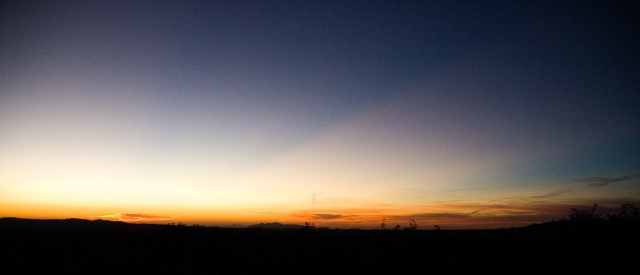
My main goal for this first night was to work more with the Stiletto Focuser with my Nikon D70 DSLR. As previously noted in these reports, focusing faint night sky objects using the D70 viewfinder is a challenge. The Stiletto Focuser is an aid to achieving precise focus (see my Stiletto Focuser report for more information on using it).
After twilight ended I first did a One Star Alignment with the LXD75-8"SC AutoStar to get the GEM polar axis aligned. I then did an Easy Alignment to align the AutoStar; GOTOs were good although tracking was not precise enough for exposures longer than 15-20 seconds without obvious trailing. For these tests, although taken with my D70 attached to the Off-Axis Guider, most of my test images were not guided. However, as you can see from the images, my focus tests with the Stiletto Focuser were successful.
M13, the Great Gobular Cluster in Hercules. 20 second exposure, ISO 1600, cropped from full-frame image.
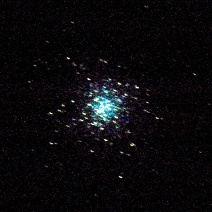
M57, the Ring Nebula in Lyra. 2 minute exposure, ISO 1600, manually guided (although not precisely), cropped from full-frame image.

Mizar, Double Star in Ursa Major. 2 second exposure, ISO 1600, full-frame image. Distinctly shows the double-star on one.
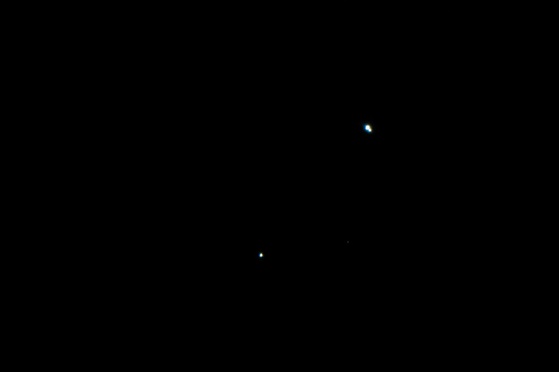
M92, Gobular Cluster in Hercules. 15 second exposure, ISO 1600, cropped from full-frame image.
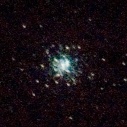
Albireo, Double Star in Cygnus. 1 second exposure, ISO 200, cropped from full-frame image. Yes, these colors are correct!

M31, The Andromeda Galaxy. 2 minute exposure, ISO 1600, manually guided (although not precisely). This image shows just the core of M31.
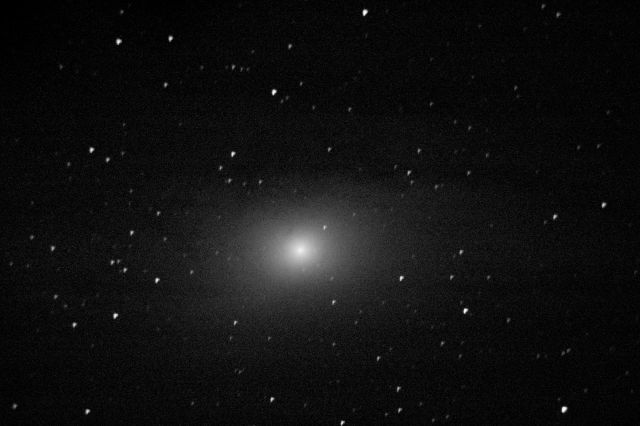
Beginning at 2200 MST I saw quite a number of nice meteors. There would be one every few minutes. I actually enjoy just looking at the night sky with my un-aided eyes and the dark sky at Oracle Observatory just makes me look away from the eyepiece quite a bit!
I took several images during the first part of the night and two things became clear to me. The first is that not having a computer with me to check the images in real-time is a pain. I have to wait until I get home to check the image quality and then retake on the next trip. This problem will be gone once we move to Arizona. The second is that the long focal length of the 8"SC (2000mm) is a little too long for effective Deep Sky Object (DSO) astrophotography with the D70.
By Midnight I was getting a little tired (I had been awake since 0400) and with the temperature at 55°F I decided to get a couple of hours of sleep and then come back out for more astrophotography tests. I put the AutoStar to sleep as well to save battery power. At 0110 MST I was awaken by the sound of the wind whipping the tent sides! The temperature had climbed up to 60°. I decided to secure all the loose items outside and call it a night.
I finally decided to get a start on my Saturday at Oracle Observatory at 0830. The temperature was 62°F, the sky was mostly clear with some clouds in the West. It was still breezy. I walked around the property looking for a good location for the permanent site of the "observatory" once we get the home construction going. Based on this "site survey" during the day and a subsequent night-time check, I believe I have found an ideal location for the future observatory.
During the morning I managed to get a couple of photographs of some visitors.
Cactus Wren, the Arizona State Bird.
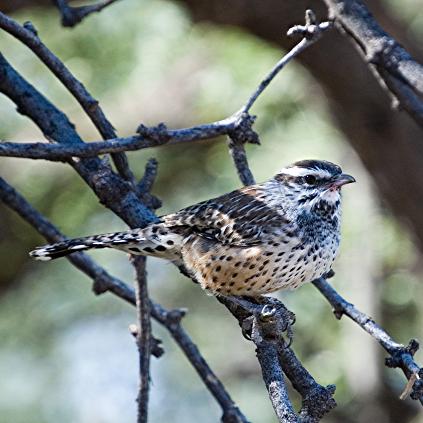
Quail.
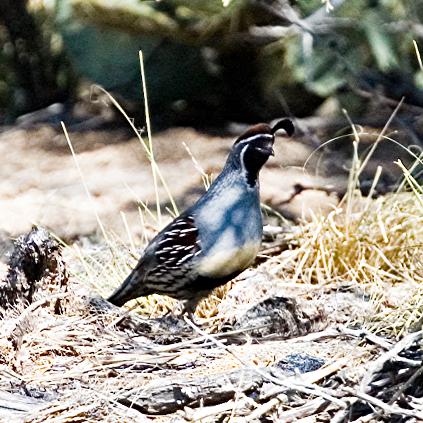
By 1300 the temperature, the wind speed, and the clouds had all increased. The temp was now 71°F and the clouds look liked this:
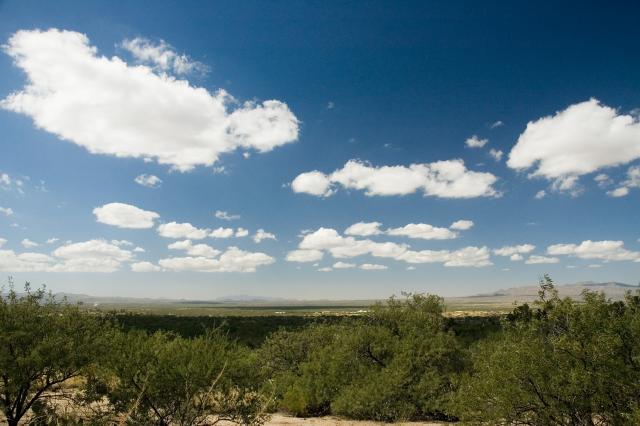
Here's a photograph of my tent when the wind was not blowing:
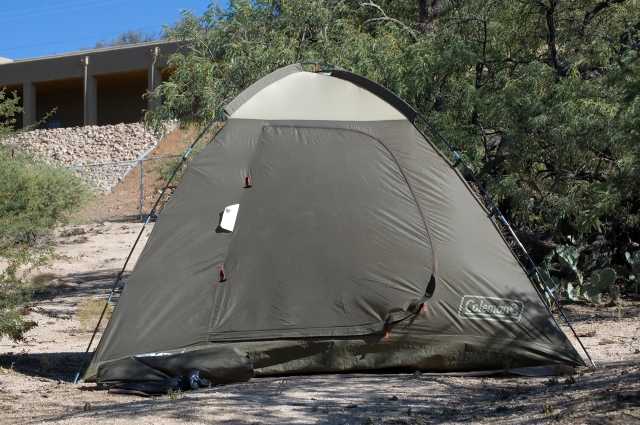
and a photograph of when it was being blown to the side due to the strong wind (look at the right side):
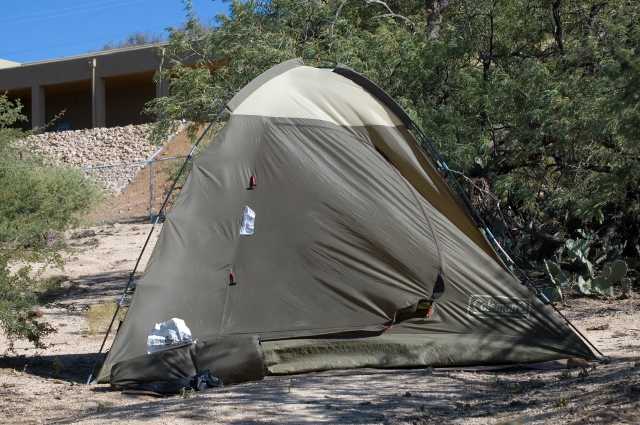
In the background you can see a portion of a neighbor's new beautiful home.
By 1545 MST the sky had cleared but the winds were still strong. These strong winds prevented me from doing some of the mount "tune-ups" discussed in the book A User's Guide to the Meade LXD55 and LXD75 Telescopes that I had planned. Hopefully I will be able to do them on the next trip.
As Sunset approached the winds finally began to decrease in speed. At 1745 MST, just a few minutes before Sunset, I located the crescent Moon (using 7x50 binoculars). Shortly after Sunset the wind had completely died down and the skies were clear. Here's a photograph showing the planet Jupiter (the white "dot" above the tree on the left), the LXD75-8"SC (lower right), and the crescent Moon (just above the LXD).
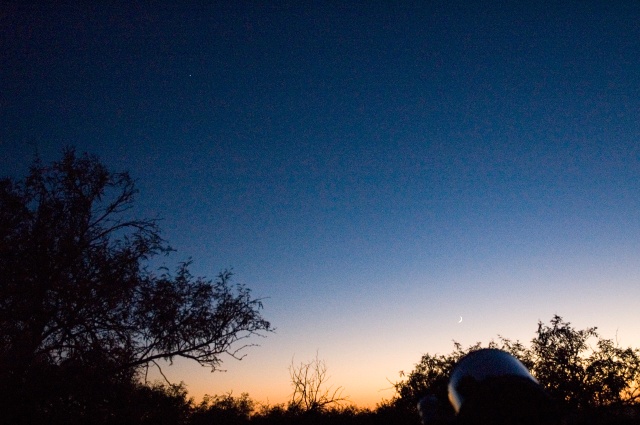
At 1915 MST, temp 48°F, I began my visual observations. Last night was the astrophotography program; tonight was the visual program. I did a One Star alignment (to check last night's polar alignment) and then a 3-Star Alignment. All GOTOs tonight put the object in the eyepiece field of view. First to be observed through the LXD75-8"SC was Jupiter. It was low in the Southwest but a couple of cloud bands and its 4 brightest moons were easily visible in the 26mm eyepiece (77X). I then switched to my 2-inch TeleVue 35mm Panoptic eyepiece (57X) for the rest of the viewing. M31 and its two companion galaxies were lovely in the 35mm eyepiece. Some dark lanes were evident in M31. The Double Cluster, an open star cluster, was awesome. M51, the Whirlpool Galaxy, had both components visible and the spiral arms of the main galaxy were easily seen. M13 was gorgeous, as well as M92 (both photographed on the previous night; seen above). I then viewed the Butterfly Cluster (open star cluster) and I was finally able to see the "butterfly"! The Lagoon Nebula had lots of fine nebulosity visible. M22, globular cluster in Sagittarius, was nice. The Wild Duck Cluster was lovely but I couldn't see the "duck". M57, the Ring Nebula was a treat; the ring appeared to be "floating" in a beautiful star field. M27, Dumbbell Nebula, was stunning in the Panoptic eyepiece with lots of structure visible. M15, globular cluster, was a fine, compact cluster with a brilliant center. M2, globular cluster, was also a nice compact cluster. Last up was the Helix Nebula, which was large but faint and indistinct.
Having had a wonderful time observing many objects and since I had to get up early for the drive back to Los Angeles, I decided to start packing things up at 2010 and go to sleep after packing up the equipment. I awoke at 0500 Sunday morning, packed up the tent, and was on the road at 0645. When I arrived back home in LA my 2002 Toyota Prius, with 92,000+ miles, had averaged 47.3 mpg for the trip. But it will still be nice once we get moved; then I won't have to worry about making that long drive anymore!!!
Until next time when I hope to get more and better photographs of Deep Sky Objects (DSOs) with the benefit of the Stiletto Focuser and better tracking. I also plan to get a Focal Reducer for DSO imaging (although that may not happen until the move to Arizona).